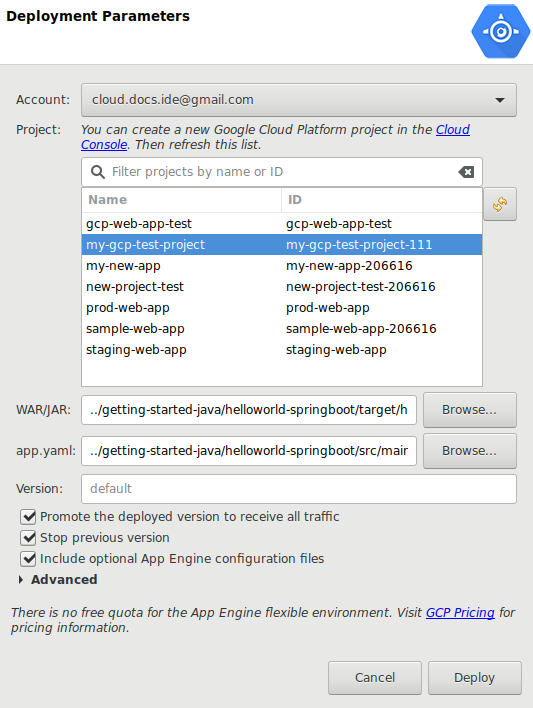This page describes how to deploy your project to the App Engine flexible environment using a WAR archive or a runnable JAR file.
Before You Begin
You need a Google Cloud project with an App Engine application to deploy to. If you don't already have one, use the Google Cloud console to set up your Google Cloud project:
- Select or create a new Google Cloud project.
Sign in to a Google account that is used to deploy your project to App Engine.
Run the following command
gcloud auth application-default loginYour system browser opens outside of the CLI and asks for the permissions it needs to manage your App Engine applications:

Click Allow and close the window. Eclipse is now signed into your account.
Deploy a JAR or WAR file
To deploy a pre-existing WAR or runnable JAR file to the flexible environment:
Prepare an
app.yamlfile. At a minimum, it should contain the following lines:runtime: java env: flexClick the Google Cloud toolbar button
 .
.Select Deploy WAR/JAR File to App Engine Flexible... in the drop-down menu.

Select the Account you want to deploy with, or sign in with a different account.
In the Project list box, select the Google Cloud project you want to deploy to.
In the WAR/JAR field, click Browse to select the archive file.
In the app.yaml field, click Browse to select your
app.yamlfile.If you want to keep the current version running and manually promote the new version later using gcloud or the Google Cloud console, clear the Promote the deployed version to receive all traffic checkbox.
If you don't want to stop the previous version, clear the Stop previous version checkbox.
Click Deploy.
After a successful deployment, Eclipse opens an internal browser connecting to the deployed app.
What's next
- Explore the plugin code or report issues on GitHub, or ask a question on Stack Overflow.
